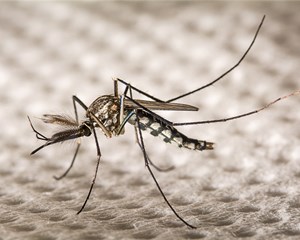Pest control
害蟲防治
Cas-9-trated
CAS9閹割術
Genetic engineering may help control disease-carrying mosquitoes
基因工程有助于控制攜帶疾病的蚊子
Every year, hundreds of millions of people catch mosquito-borne diseases like malaria and dengue fever. Hundreds of thousands die. Drug treatments are imperfect. And, despite decades of effort, vaccines have, for many of these diseases, proved tricky to develop.
每年都有數以億計的人感染瘧疾和登革熱等蚊媒疾病,成千上萬的人因此而死亡。藥物治療并不完美,而且,盡管經過了幾十年的努力,但許多此類疾病的疫苗還是難以研制。
Better, then, to stop those infections happening in the first place, by exterminating—or at least suppressing—the mosquitoes that carry the diseases. In a paper just published in the Proceedings of the National Academy of Sciences, a team of researchers led by Craig Montell, of the University of California, Santa Barbara, describe how CRISPR-CAS9, a new and powerful genetic-engineering process, could help to do just that.
那么,最好從一開始就通過消滅——或者至少抑制——攜帶疾病的蚊子來阻止這些感染的發生。在剛剛發表在《美國國家科學院院刊》上的一篇論文中,由加州大學圣巴巴拉分校的克雷格·蒙特爾領導的一組研究人員,描述了CRISPR-CAS9(一種新的強大的基因工程過程)是如何幫助實現這一目標的。

Dr Montell and his colleagues used CRISPR to boost an existing control method called the sterile insect technique (SIT). This involves releasing lots of sterilised males into the wild. Females that mate with these males produce no offspring. Repeated releases can reduce populations dramatically. SIT has been used in North America to eliminate screwworm flies, an agricultural pest, and to suppress several species of crop-munching fruit flies.
蒙特爾博士和他的同事利用CRISPR技術來增強一種現有的控制方法——昆蟲不育技術(SIT)。這項技術需要將很多絕育的雄性放生到野外,與這些雄性交配的雌性不會產下后代,反復進行放生則會大大減少其種群數量。SIT已在北美被用于消滅螺旋蠅(一種農業害蟲)并抑制幾種吃莊稼的果蠅。
It has been tried on mosquitoes, too, but with less success. One reason seems to be side-effects of the procedure. To sterilise them, males are zapped with radiation or exposed to toxic chemicals. This works, but it damages them in other ways, too. The result can be sickly individuals that struggle to compete in the mating game with their wild counterparts.
這項技術也曾在蚊子身上做過試驗,但效果不太好。其中一個原因似乎是過程的副作用。為了使它們絕育,雄性會被輻射或者暴露在有毒化學物質當中。效果是有的,但也會在其它方面有所損害。結果可能就是,病懨懨的個體難以與野生的同類在交配競爭中勝出。
Dr Montell and his colleagues hoped that CRISPR might offer an alternative. Their first step was to look for genes which, when disabled, would render male mosquitoes infertile. They began their hunt in fruit flies, a stalwart of genetic research. They focused on a gene that, when removed, made male fruit flies sterile—and which was present in a similar form in their target mosquito species, Aedes aegypti, which is the vector of, among other illnesses, yellow fever, dengue and Zika virus. Disabling the equivalent gene in male Aedeslikewise left them infertile.
蒙特爾博士和他的同事希望CRISPR能夠提供另一種選擇。他們的第一步是尋找那些失去功能后會導致雄性蚊子不育的基因。他們開始在果蠅身上尋找基因研究的中堅力量。他們重點研究了一種基因,該基因在去除后會使雄性果蠅不育,而這種基因在他們的目標蚊子種類埃及伊蚊(黃熱病、登革熱和寨卡病毒等疾病的傳播媒介)中以類似的形式存在。
譯文由可可原創,僅供學習交流使用,未經許可請勿轉載。











